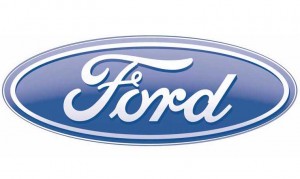The specter of Takata continues to grow as Ford is recalling nearly 391,000 Ranger pickups because the driver-side airbag inflators from the supplier can explode with too much force causing injuries and deaths.
The recall, which is for 2004 through 2006 model year trucks in the U.S. and Canada, comes a month after the death of a South Carolina man who died when the Takata-produced airbag exploded and he was struck in the neck by a piece of metal shrapnel after hitting a cow and then a fence in his 2006 Ford Ranger. Joel Knight was 52 years old.
The crash alone would not have been sufficient to kill Knight, according to Amanda Dotter, spokeswoman for the Elrod Pope Law Firm, the attorneys representing the family. The event and subsequent findings pushed the National Highway Traffic Safety Administration to expand its recall of Takata-produced inflators by another 5 million units.
The exact number of vehicles that will be affected has yet to be determined, but it is expected to number in the millions. NHTSA officials said in announcing the additional 5 million recalls that they expected that number will continue to grow.
(As 10th death reported, Takata expands recall. For more, Click Here.)
While the most recent fatality – the 10th death caused by the airbags – was a factor in the most recent move by federal regulators, it wasn’t the only one. Officials claim that ongoing testing of airbag inflators revealed other faulty components. Currently, 14 vehicle manufacturers and more than 23 million inflators and 19 million vehicles are part of the recall. In addition to the deaths, more than 100 people have been injured.
According to some reports, the problem is in the chemical compound used in the inflators. Takata uses ammonium nitrate to cause a small explosion that creates gas and inflates air bags in a crash. However, the chemical may deteriorate over time especially when exposed to high heat and humidity. When it degrades, it burns too fast, blowing apart a metal canister designed to contain the explosion.
Ford will send letters to owners about the recall starting the week of Feb. 22. However, getting the letter may not be a great thing as the availability of replacement parts is not great. The automaker is working with airbag makers to make additional inflators as soon as possible, spokesman John Cangany told the Associated Press.
Compounding the frustration of some is that fact that the Rangers in the current action also were recalled last year to replace the passenger airbag inflators. Ford says customers can find out if their trucks are included by going to Ford.com and clicking on “safety recalls.” Then they can enter their vehicle identification number to check.
(Click Here for details about automakers setting another record for recalls in 2015.)
NHTSA has been pressing all of the automakers who have done business with Takata to see if they have used any of the inflators thought to be at risk.
In turn, the agency is now advising motorists to check to see if their vehicles are on the known recall list. They can go either to the NHTSA website, SaferCar.gov, or to the websites operated by individual manufacturers.
The Takata problem has been escalating since the first recall was announced in 2013. The supplier was pulled before Congress four times, and then heavily fined last year for dragging its feet on the problem, Takata ultimately accepting a consent order that requires it to revise its safety procedures. If it does not live up to the agreement it could face additional fines.
But there is growing concern the company could go bankrupt, as a number of its customers have been dropping the supplier.
(To see more about the safety consortium between the feds and 18 automakers, Click Here.)
The latest recall comes just as NHTSA confirms that a record number of vehicles, about 51.2 million in total, were recalled in 2015. That’s the second consecutive record and, as much as anything, it reflects the increasing pressure the auto industry is under to respond quickly to potential problems.

